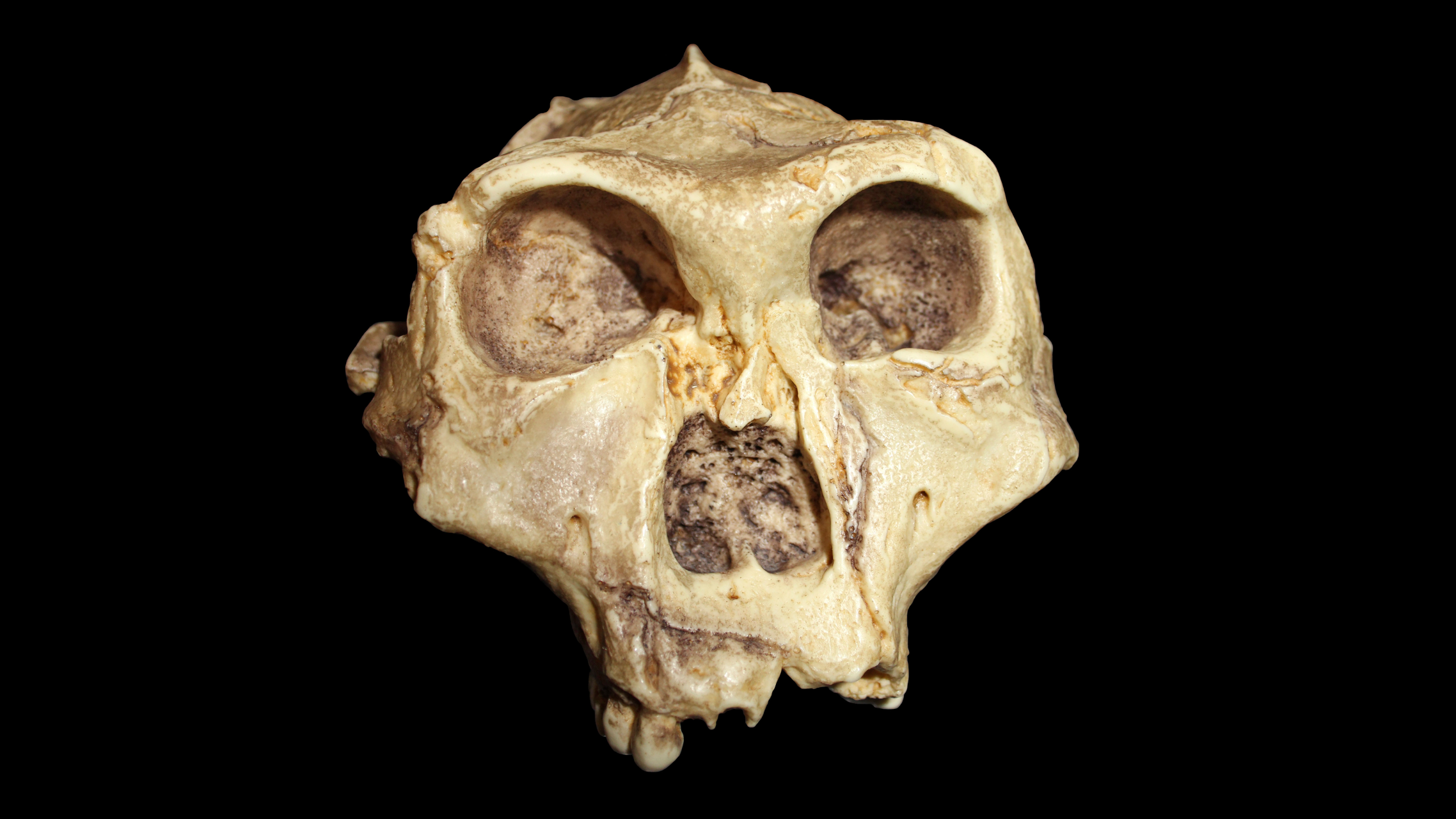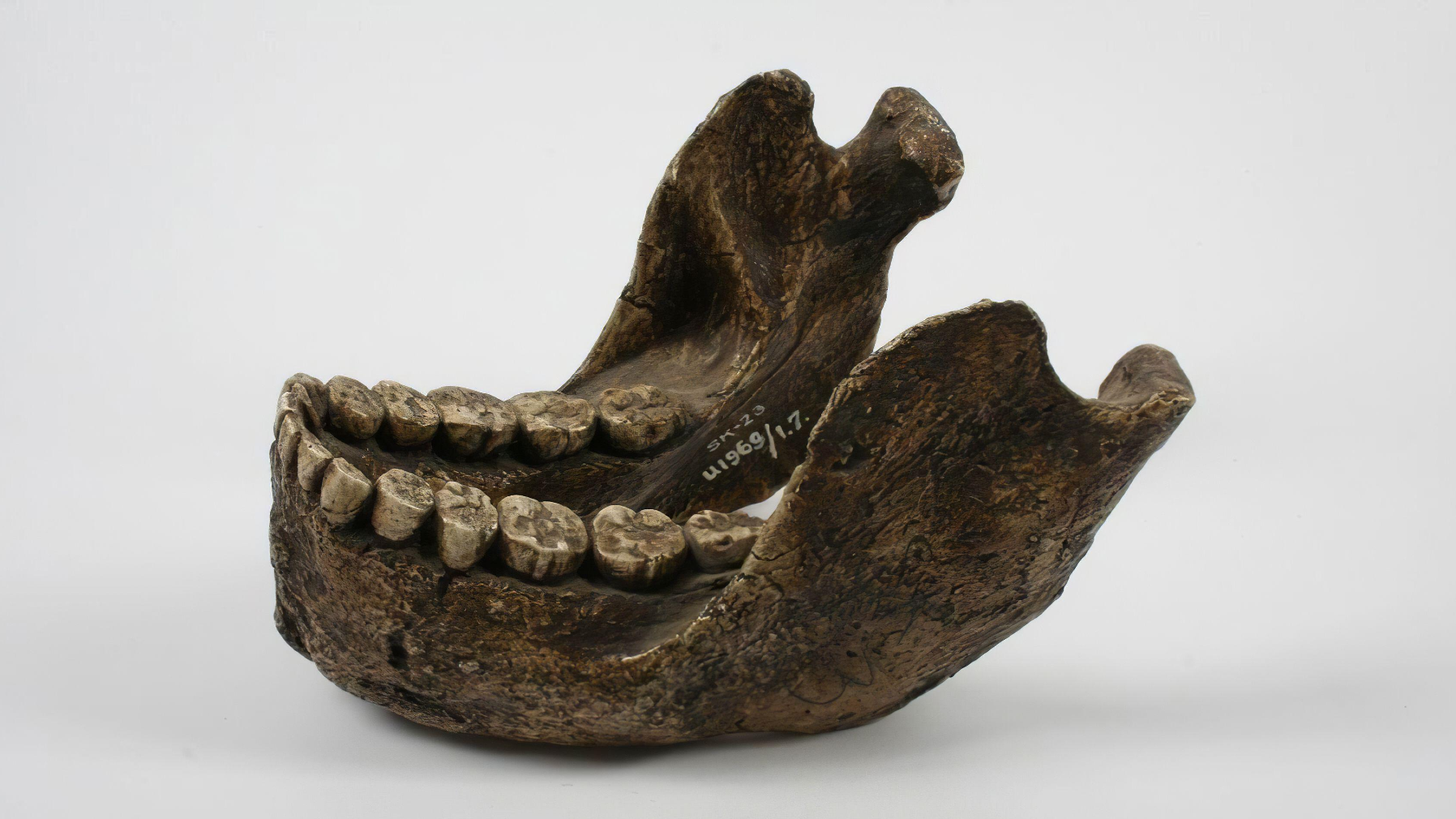2.2 million-year-old teeth reveal secrets of human relatives found in a South African cave
A cutting-edge technique for analyzing fossil tooth enamel is revealing remarkable new information about 2 million-year-old human relatives.

Small pieces of tooth enamel from deep in a South African cave have begun to reveal secrets held for 2 million years by a distant human relative, a new study finds.
Archaeologists recovered teeth from four members of the species Paranthropus robustus, a two-legged human relative who lived between 1.8 million and 1.2 million years ago, from Swartkrans, a fossil-bearing cave in Africa's Cradle of Humankind World Heritage site. Using cutting-edge techniques that can analyze fossils’ amino acid sequences, the researchers were able to determine the sex of the individuals and discovered surprising genetic variation that could point to the existence of a previously unknown species.
These techniques are part of the field of proteomics, or studying sets of preserved proteins — a relatively new area of science that is shedding much-needed light on the evolution of early hominins, a group that includes humans and our closest relatives.
"Figuring out the human family tree using proteins is the goal," Claire Koenig, a postdoctoral researcher at the University of Copenhagen and co-author of a study published Thursday (May 29) in the journal Science, told Live Science in an email co-written with lead author Palesa Madupe and co-author Ioannis Patramanis. But currently "our ability to distinguish between different species is limited by the small number of different proteins present in enamel."
Although DNA has been recovered from ancient skeletons in Africa, so far that technique has only successfully worked on hominin material dating to no more than 20,000 years ago — well within the lifetime of our own species, Homo sapiens — because DNA degrades quickly in that environment. To get at the roughly 6 million-year history of hominin evolution, analysis of the harder and more stable tissue of dental enamel is needed.
In the new study, an international team of researchers led by Madupe employed paleoproteomic analysis to move beyond the limits of ancient DNA and understand the genes of four hominins who lived around 2 million years ago.
"Proteomics is inherently a destructive technique, but we take great care to minimize impact, especially when working with rare or precious specimens," Koenig said.
Get the world’s most fascinating discoveries delivered straight to your inbox.
Related: In a 1st, ancient proteins reveal sex of human relative from 3.5 million years ago
The researchers focused their proteomic analysis on four P. robustus individuals who likely all died around the same time. They were able to identify AMELY-specific peptides, which are found in the tooth enamel of males, in two individuals. The other two individuals had a high AMELX intensity, meaning they were likely female.
Correctly determining the sex of a fossil is important in paleoanthropology because most hominins are sexually dimorphic, with males being, on average, larger than females. Experts therefore expect that any species will have some larger and some smaller individuals.
But Madupe and colleagues discovered a surprising result: one P. robustus individual who was thought to be female, based on tooth size and shape, was actually male, based on proteomic data. "Our results thus indicate that measurements of dental size are not necessarily accurate for correct sex estimation," the researchers wrote in the study.

Diversity in our ancient relatives
Since sex alone could not explain the differences in the appearance of P. robustus, the team investigated whether the diversity they were seeing could be the result of different groups or species they didn't know about, or the result of interbreeding, as P. robustus overlapped in time with australopithecines and early members of the Homo genus.
The researchers found a couple amino acid sequence positions that varied among the P. robustus specimens they examined, and that were different from the amino acid sequences seen in present-day humans, Neanderthals and Denisovans. This analysis revealed that one of the individuals — SK-835, whose molecular sex and morphological sex did not match up — was more distantly related to the other three individuals than they were to each other.
"It would be premature to classify SK-835 as a member of the newly proposed Paranthropus [capensis] taxa," Koenig said, but it remains a possibility that the amino acid difference reflects its position in a different species than the rest.
It could also be explained, however, by microevolution at different sites, study co-author Rebecca Ackermann, a biological anthropologist at the University of Cape Town, told Live Science in an email. "We need to analyse more Paranthropus material from different sites to get a better handle on the variation within southern African Paranthropus," she said.
Because the enamel proteome is so much smaller — and provides less information — than a full genome, reconstructions of fossil human relatives need to be cautiously interpreted, Ackermann said.
Koenig expects that further methodological developments will be beneficial, including less invasive methods such as acid etching to remove an extremely thin layer of dental enamel, and the development of faster and more sensitive protein-sequencing instruments.
"It remains to be seen, for example, whether or not we can molecularly tell apart a Paranthropus robustus from an Australopithecus africanus," Koenig said, "because these species are closely related and therefore their proteins are going to look very similar."
Evolution quiz: Can you naturally select the correct answers?

Kristina Killgrove is a staff writer at Live Science with a focus on archaeology and paleoanthropology news. Her articles have also appeared in venues such as Forbes, Smithsonian, and Mental Floss. Kristina holds a Ph.D. in biological anthropology and an M.A. in classical archaeology from the University of North Carolina, as well as a B.A. in Latin from the University of Virginia, and she was formerly a university professor and researcher. She has received awards from the Society for American Archaeology and the American Anthropological Association for her science writing.
You must confirm your public display name before commenting
Please logout and then login again, you will then be prompted to enter your display name.
